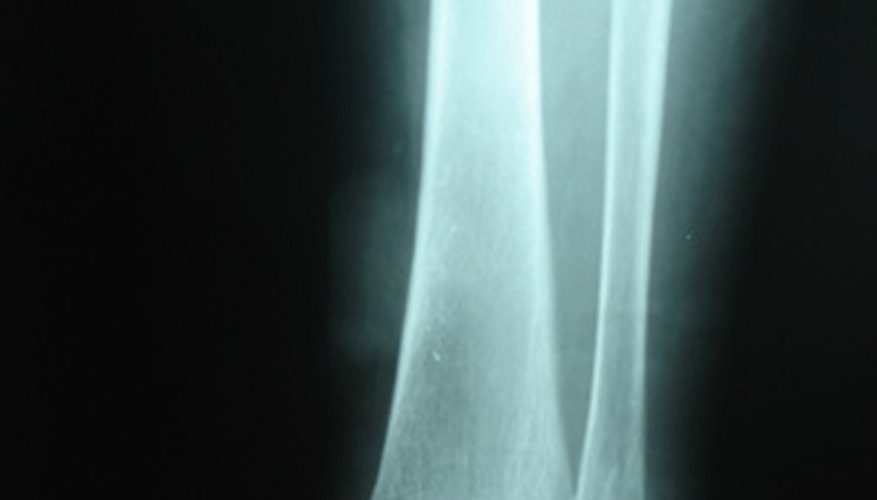A back slab is a temporary cast used in the early treatment of injuries such as an ankle fracture. The back slab contains plaster for the back bracing near the Achilles tendon but has no plaster in the front. This allows the natural amount of swelling to occur without excess pressure within the cast. Traditional casts may create blood restriction, added pain and discomfort. Your doctor will follow certain protocol in using a back slab for an ankle fracture.
- A back slab is a temporary cast used in the early treatment of injuries such as an ankle fracture.
- Your doctor will follow certain protocol in using a back slab for an ankle fracture.
X-ray the ankle to confirm the fracture. The X-ray will show how severe the fracture is and the exact location. This helps your doctor properly set the ankle for healing.
Set the ankle in the back slab. This protects the ankle from excess movement that may impede the proper healing of the bones.
Examine the ankle in two to four days. The first 24 to 48 hours is when swelling may be the worst. Once you have passed this threshold, your doctor will review your progress to see if a full cast is the next step.
Replace the back slab with a full circumferential cast, a cast that has plaster all around the ankle, when excess swelling is no longer an issue. Your ankle should be back to its normal size, or very close to it, to go into a full cast.
- Set the ankle in the back slab.
- Replace the back slab with a full circumferential cast, a cast that has plaster all around the ankle, when excess swelling is no longer an issue.
WARNING
Overcasting leads to unnecessary atrophy of the muscles around the fracture. It is common for doctors to use a back slab for no more than a few days and a cast for up to six weeks according to Skylark Medical Clinic.
